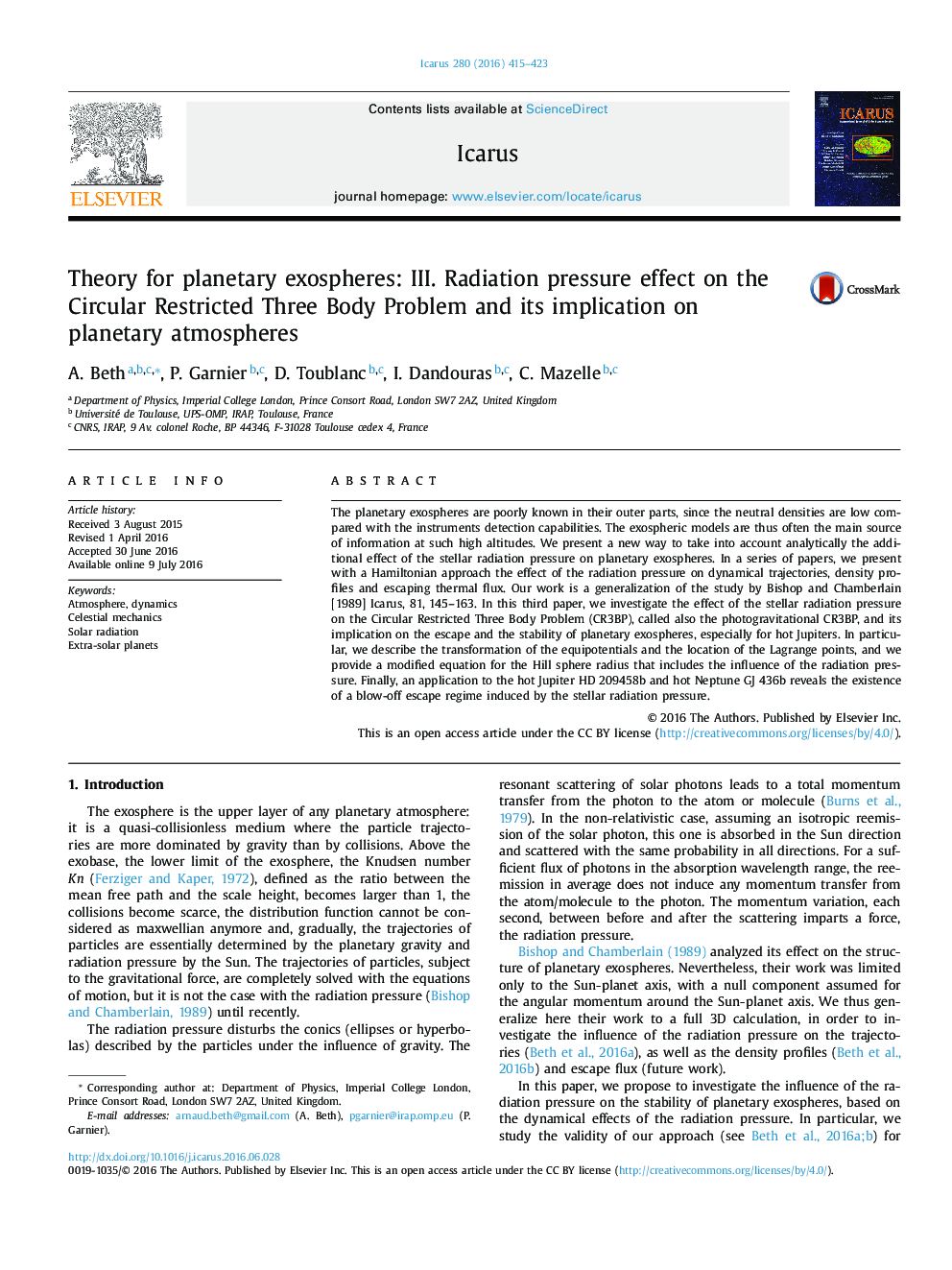| Article ID | Journal | Published Year | Pages | File Type |
|---|---|---|---|---|
| 8134815 | Icarus | 2016 | 9 Pages |
Abstract
The planetary exospheres are poorly known in their outer parts, since the neutral densities are low compared with the instruments detection capabilities. The exospheric models are thus often the main source of information at such high altitudes. We present a new way to take into account analytically the additional effect of the stellar radiation pressure on planetary exospheres. In a series of papers, we present with a Hamiltonian approach the effect of the radiation pressure on dynamical trajectories, density profiles and escaping thermal flux. Our work is a generalization of the study by Bishop and Chamberlain [1989] Icarus, 81, 145-163. In this third paper, we investigate the effect of the stellar radiation pressure on the Circular Restricted Three Body Problem (CR3BP), called also the photogravitational CR3BP, and its implication on the escape and the stability of planetary exospheres, especially for hot Jupiters. In particular, we describe the transformation of the equipotentials and the location of the Lagrange points, and we provide a modified equation for the Hill sphere radius that includes the influence of the radiation pressure. Finally, an application to the hot Jupiter HD 209458b and hot Neptune GJ 436b reveals the existence of a blow-off escape regime induced by the stellar radiation pressure.
Related Topics
Physical Sciences and Engineering
Earth and Planetary Sciences
Space and Planetary Science
Authors
A. Beth, P. Garnier, D. Toublanc, I. Dandouras, C. Mazelle,
